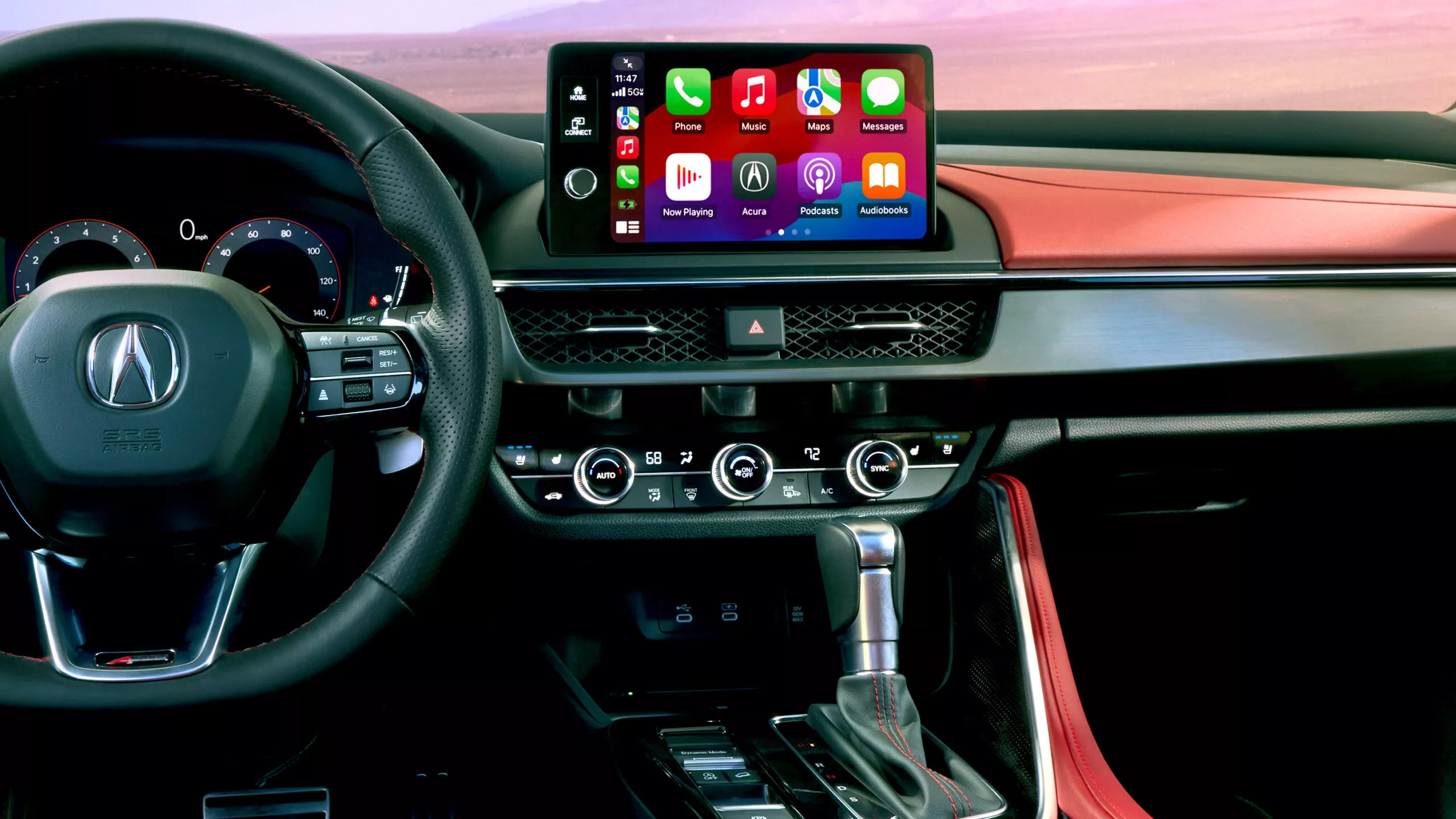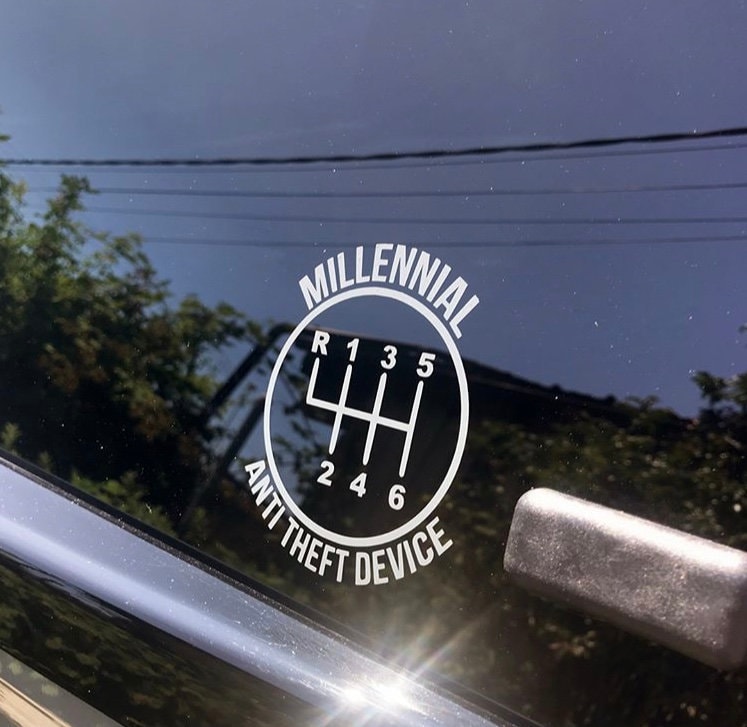
Acura’s new 2025 ADX keeps dials and buttons alike
Posted on 10/01/2025 5:36:30 PM PDT by ProtectOurFreedom
It seems that the world of technology—including the automotive industry—is undergoing a “re-buttoning” phase. While touchscreens remain a dominant feature in vehicle interiors, automakers are revisiting the value of physical controls as drivers rediscover their importance. Driving, after all, is one area where practicality and safety demand simplicity. But what’s driving this shift in design philosophy?”
Rachel Plotnick, an Associate Professor at Indiana University Bloomington and something of a “button guru,” has been studying this tactile resurgence for years. As the author of Power Button: A History of Pleasure, Panic, and the Politics of Pushing (2018), Plotnick has explored the psychology and cultural history of buttons and their enduring role in technology. Today, she’s helping companies refine their interfaces, balancing the digital with the tactile.
In an interview with IEEE Spectrum, Plotnick was asked about the factors driving the “re-buttoning of consumer devices,” a trend that is becoming increasingly apparent in car interiors. The expert responded:
“Maybe screen fatigue. We spend all our days and nights on these devices, scrolling or constantly flipping through pages and videos, and there’s something tiring about that. The button may be a way to almost de-technologize our everyday existence, to a certain extent. That’s not to say buttons don’t work with screens very nicely – they’re often partners. But in a way, it’s taking away the priority of vision as a sense, and recognizing that a screen isn’t always the best way to interact with something.”
In cars, this critique has teeth. Plotnick highlights that touchscreens can be unsafe in certain contexts, as they demand visual attention to operate—something drivers simply can’t spare. Physical controls, by contrast, offer the “simplicity of limiting our field of choices” and allow for intuitive operation without diverting focus from the road.
To their credit, many automakers are beginning to recognize the limitations of touchscreens—or, lets be honest, the pitfalls of cost-cutting measures that eliminated physical controls in favor of screens—all thanks to growing consumer backlash. Physical buttons, switches and knobs for essential functions, like climate control and volume adjustment, are making a gradual comeback.

Acura’s new 2025 ADX keeps dials and buttons alike

|
Click here: to donate by Credit Card Or here: to donate by PayPal Or by mail to: Free Republic, LLC - PO Box 9771 - Fresno, CA 93794 Thank you very much and God bless you. |
I learned driving in a 1962 VW Bug so knew how to drive a stick from an early age.
I remember a safe-driving article in Popular Science magazine in the late 60s that said people only used their right foot for both gas and brake because the left foot was occupied with the clutch. It pointed out that, in cars with automatic transmissions, it is far safer to use the left foot for brakes and right foot for gas. The theory is you can hover your left foot over the brakes in dicey situations, thus reducing your reaction time to get on the brakes. I took that advice to heart and taught myself how to drive both a manual (left foot clutch and right foot brake and gas) and an automatic (left foot brake, right foot gas). I still instinctively hover the left foot over the brake when in congested areas, intersections, slowdowns on the freeway, etc. You just have to be careful to leave a small air gap between your left foot and the brake pedal so you don’t ride the brakes.
The gigantic glowing touch screen is one reason I will never buy a Tesla.

I also use the steering wheel buttons to adjust volume and go back one track or skip forward. It’s a VERY handy feature. My Bluetooth in my 2014 Expedition started acting up (dropouts on Spotify — not sure if it is Spotify over cellular or Bluetooth), so I just switched to a USB wired connection from the phone to the car. I was afraid I would lose the steering wheel control of audio, but it works fine!
It’s amazing that the 11 year old tech in the car is still working fine with my modern iPhone 16 and latest IOS.
Crazy stuff. This happened in the Denver area.

The first time I saw that I about died laughing. How many people today even know what a "shift gate" is?
I taught our middle daughter and last child (son) to drive a stick. He's 34 now and always laughs at the number of his friends that cannot drive a stick. I don't think our oldest (now 39) knows how to drive a stick).
Evaporative cooling...what will those crazy kids think of next!




When I give up and build my own that’s how it’s going to be!
This was an interesting auto museum I stumbled upon in Cape Cod MA, cars collected by one of the Lilly’s of Eli Lilly fame.
https://heritagemuseumsandgardens.org/exhibits/auto2025/
Lol... Yep, it was before A/C. I had a 49 Nash with one of those.
I rent cars often for work travel, and some cars these days won't let you turn on cruise control if your seatbelt isn't fastened. The vehicle will literally jerk the steering wheel to one side or the other if IT decides that you're "too close" to the edge of the lane, even when you're veering over to turn or are just changing lanes. It will tap (or slam) on the brakes if it decides that something is ahead of you (and in one instance, the item ahead of me was the shadow of an overpass. In all of those cases, the sudden movements could easily lead to seriously bad results. When hydroplaning, if any of those occur, you're likely going to spin out and meet a wall or go off the road.
(I will admit that once, the sudden brake tap likely did save me from a bad day and an insurance claim, because I was approaching the truck ahead of me too quickly, and it was braking. Also, the lane sensor thing won't go snap the wheel when changing lanes if your turn signal is on.)
I'm Old School, and ANYTHING that takes away my control of the vehicle that I'm driving is just a horrible horrible idea. SOME vehicles allow you to turn these "features" off, but I think that most do not (or at least I couldn't figure out how to do so, in the week or two that I had that car).
And don't get me started on OnStar and other ways to turn off or disable a vehicle remotely... and how THAT could be horribly misused by evil people or stupid kids.
Thanks. I actually stumbled upon the Heritage Museum not long ago while looking at Google Maps!
Just imagine where things are going to be in 10, 20 and 30 years! AI chips will be cheap and ubiquitous. They will be embedded in many auto systems. Already today, the average car has 25–50 CPUs controlling core systems like fuel injection, stability, and sensors.
Luxury or high-end vehicles have up to 100–150 CPUs, including those for entertainment, navigation, and semi-autonomous driving features.
Yeah, I’ll be buying a 70s MOPAR, and just being happy with that, thank you!
That's why I won't buy a Mazda. Touch interface is important for things like typing in an address on the nav screen when voice command can't decipher a strange name. There are also many menus to go through for various settings that are also best done with a touch screen, while you're parked of course. My 2024 GMC Sierra strikes a nice balance with a nice big touch screen and plenty of dials, knobs and push buttons. That's what Subaru has done with the 2026 Outback.
I actually got into my hobby of Computers because I had a working truck and auto repair shop when they started integrating computerized engine management. So I had to keep up. It led to playing with personal Computers.
Disclaimer: Opinions posted on Free Republic are those of the individual posters and do not necessarily represent the opinion of Free Republic or its management. All materials posted herein are protected by copyright law and the exemption for fair use of copyrighted works.